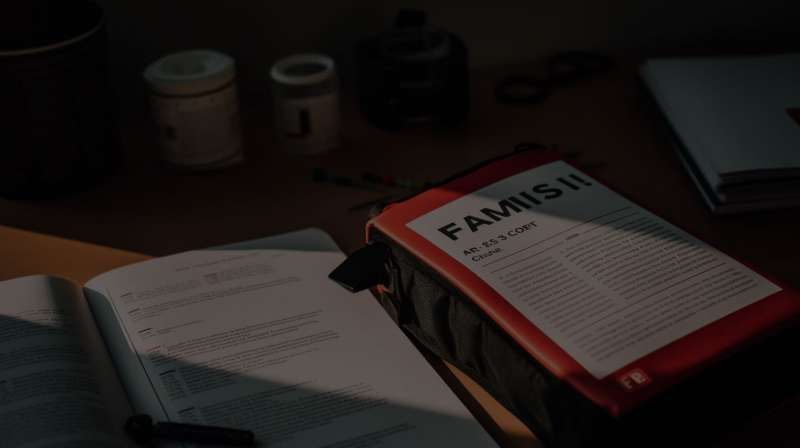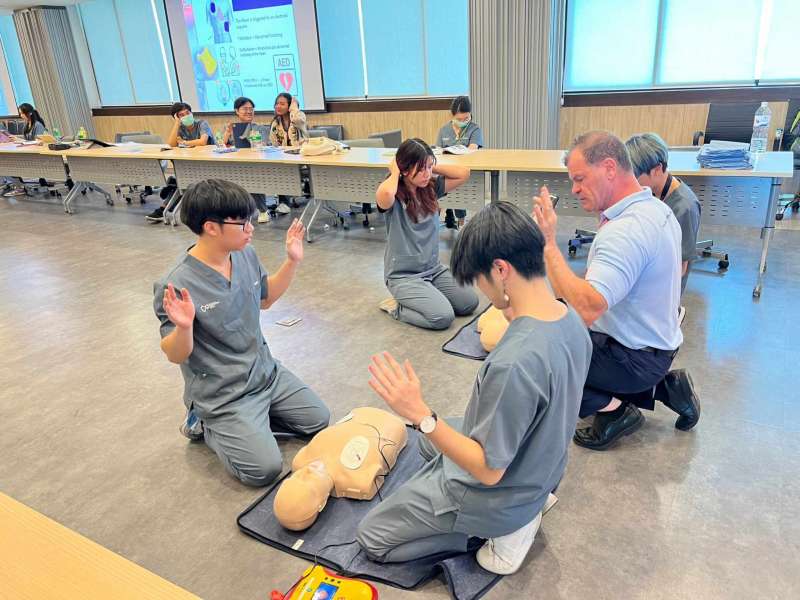At First Aid Training Bangkok (FATB), our CPR and First Aid training programs are continuously updated to reflect the newest evidence-based guidelines. In 2025, one of the most significant updates from the International Liaison Committee on Resuscitation (ILCOR), American Heart Association (AHA) European Resuscitation Council, and American Red Cross changed how rescuers perform infant CPR chest compressions.
This change — eliminating the old two-finger technique and introducing the two-thumb encircling technique and the alternative technique, the heel-of-one-hand technique. — These two techniques are grounded in strong medical, anatomical, and research-based evidence. Here’s what the science shows and how First Aid Training Bangkok, leading training in Thailand, has already integrated this update into our training programs.
The Medical and Anatomical Reasons for the Change
Infant anatomy differs greatly from that of adults or older children. Their chest walls are softer and more flexible, and their hearts are proportionally larger within the thoracic cavity. These differences mean that shallow or inconsistent compressions may not generate enough blood flow to the heart and brain.
Research showed that the two-finger technique — long used by single rescuers — often results in inadequate depth and less consistent compression quality. It also causes greater rescuer fatigue, which quickly reduces the effectiveness of CPR.
In contrast, both the two-thumb encircling technique and the heel-of-one-hand technique allow rescuers to apply more controlled force and maintain consistent compression depth with less fatigue. This leads to better perfusion pressure and improved blood circulation during resuscitation.
Scientific Studies Supporting the Change
Several high-quality studies and evidence reviews drove the 2025 update:
- ILCOR 2025, ARC, and AHA Consensus: Systematic reviews found that the two-thumb encircling method produces deeper compressions and better perfusion pressure compared to the two-finger method.
- Animal studies (neonatal piglet models): The two-thumb encircling technique achieved significantly higher coronary and cerebral blood flow than the two-finger method.
- Manikin and simulation research:
- 2025 Pediatric Basic Life Support (BLS): Officially removes the two-finger method from its standard guidance, stating that “for infants, chest compressions should be performed using the heel of one hand or the two-thumb technique.”
In short, the evidence shows that using the thumbs or heel of the hand provides stronger, deeper, and more consistent chest compressions — improving the infant’s chance of survival.
What Changed in the 2025 Guidelines
Under the 2025 ILCOR, ARC, and AHA updates, the following techniques are now recommended for infants (under 1 year old):
- Preferred: Two-thumb encircling hands technique — thumbs on the sternum, fingers supporting the back.
- Alternative: Heel-of-one-hand technique — used when the rescuer cannot achieve proper depth or control using thumbs.
- Removed: Two-finger technique — no longer recommended as a standard method due to reduced depth and higher fatigue.
Guideline Integration: - International Liaison Committee on Resuscitation (ILCOR) CoSTR 2025 - European Resuscitation Council (ERC) Guidelines 2025 - American Heart Association (AHA) 2025 Guidelines for CPR & ECC - American Red Cross (ARC) 2025 Teaching Recommendations
| Rescuer Type | Technique | Hand Placement | Key Notes |
|---|---|---|---|
| Single Rescuer | Heel of One Hand (AHA 2025 update) | Center of sternum, just below nipple line | Two-finger technique eliminated in AHA 2025. Use the heel of one hand if control and depth can be maintained. |
| Two Rescuers | Two-Thumb Encircling Technique | Thumbs on sternum, fingers encircle torso and support back | Preferred technique (AHA, ILCOR, ERC). Produces higher coronary perfusion and consistent depth. |
Compression Quality Targets:
• Rate: 100–120 compressions/minute • Depth: Approximately 4 cm (1.5 inches) • Full Recoil: Allow chest to fully return after each compression • Minimize Pauses: Limit interruptions to <10 seconds • Compression-to-Breath Ratio: 30:2 (single rescuer) / 15:2 (two rescuers)
This change marks a major step toward improving CPR quality, especially for lay rescuers and healthcare providers performing solo infant resuscitation.
How First Aid Training Bangkok Has Integrated the 2025 Changes
At First Aid Training Bangkok, our mission is simple: Empowering People to Save Lives. We’ve already integrated these new guidelines across all infant CPR modules to ensure every student trains with the most current and effective techniques.
Here’s how First Aid Training Bangkok has implemented the update:
- Updated Training Materials: Our new bilingual student handouts and instructor cards clearly show both the two-thumb and heel-of-hand methods, with a red “X” over the outdated two-finger technique.
- Hands-On Skill Practice: Students practice each method on high-fidelity infant manikins to master proper depth, rate, and recoil.
- Instructor Emphasis: First Aid Training Bangkok instructors explain why these changes were made — reinforcing the anatomy and science behind each adjustment for better retention.
- Refresher Courses: Returning students are re-trained using the new methods to maintain alignment with the ILCOR, ARC, ERC, and AHA 2025 Guidelines.
- Compliance and Certification: All First Aid Training Bangkok CPR, AED, and First Aid courses meet international standards (ILCOR,AHA, ERC, ARC).
Why This Update Benefits You
The update isn’t just about technique — it’s about better outcomes. Better compressions mean better oxygen delivery, higher survival rates, and greater confidence for rescuers. Whether you’re a parent, childcare provider, or corporate safety officer, learning the correct method can truly make the difference between life and death in an infant cardiac emergency.
Conclusion
The 2025 infant CPR guideline changes reflect the latest global evidence — showing that the two-thumb encircling and heel-of-one-hand techniques are more effective, safer, and sustainable for rescuers. At First Aid Training Bangkok, we’ve already adopted these updates across all certified courses, ensuring that every participant learns to perform CPR the right way, the first time.
Learn more or book your CPR and First Aid course today at 👉 www.firstaidtrainingbangkok.com




Share on social media